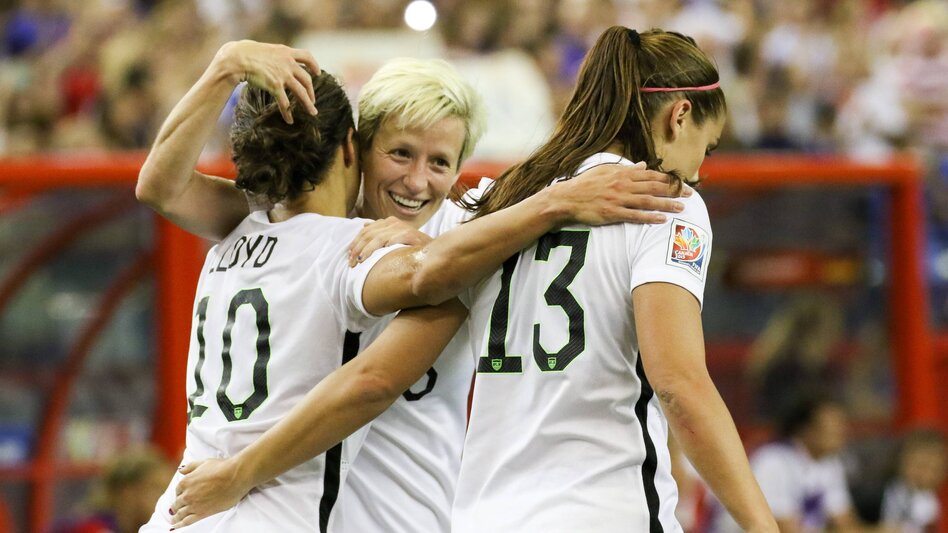The US women have won the World Cup four times. You will benefit from a historical development. But can football hold its own against Europe?
Goal vs. Germany: Carli Lloyd, Megan Rapinoe and Alex Morgan from Team USA at the 2015 World Cup Photo: imago/foto2press
The American TV channel Fox is advertising that the American women will compete with the rest of the world in the upcoming World Cup. It’s a bit arrogant, but American players disagree. Asian, African and Latin American teams are more and more noticeable, but above all expect a clash between North America (Canada and USA) and Europe (Germany, Sweden, England, France, Holland and Spain).
They are two soccer organizations that have arrived today in completely different ways: In the 1970s, North American women immediately entered a world of soccer that opened up to them. This was caused by reforms such as Title IX, which is very important in the United States and guarantees access to all sports programs in schools and universities.
The weakness of men’s football made women’s football strong
Importantly, the dominant male-dominated team sports are diverse: baseball, football, basketball, and ice hockey. European women, on the other hand, have been forced to conquer the male-dominated field of football across Europe.
The success of teams from not only America and Canada, but also North, South Korea, China, Japan, Australia, and Norway and Sweden in Europe is the best proof that the weakness of men’s soccer has made women’s soccer strong.
Two different junior systems
In traditional football powerhouses such as England, Germany, Italy, Spain, France, the Netherlands or Brazil and Argentina, women’s football has been very difficult to develop. It is great that Europe can now challenge American hegemony. In the last World Cup, seven European nations and the United States clashed in the quarter-finals. This clash should become more evident in the upcoming World Cup.
Nowadays, European teams like Real Madrid, FC Barcelona, Bayern Munich, Manchester United, Manchester City and Olympique Lyon have embraced women’s football wholeheartedly. The NWSL in America cannot compete with such giants. Women’s soccer here is mostly reserved for youth clubs, high schools and colleges.
That sounds weak, but let’s be fair: the organization has produced a national football team that has ruled the world for more than 30 years since 1991. She won the first of her four World Cup titles, despite the fact that most people in America were not interested in soccer, and most people in Europe were not interested in female soccer players.
Both of these systems still exist for how talented female soccer players are discovered and nurtured. But what could be the North American counterpart of the richest super club Real Madrid in this constellation? The University of North Carolina at Chapel Hill’s Tar Heels have won 22 national championships. The question coming into the World Cup is how the American collegiate system will fare against Europe in the future.
Andrei S. Markovits is a political scientist at the University of Michigan, Ann Arbor. She has just published: “Women in American Soccer and European Soccer: Different Roads to Shared Glory”, Dickinson-Moses Press (2019, updated new edition 2023), 184 pages, approx. 12 euros.

“Amateur coffee fan. Travel guru. Subtly charming zombie maven. Incurable reader. Web fanatic.”









More Stories
Nicolas Loufrani: Young Londoners Design Afro Hair Emojis
US Election: Trump Vs. Harris – 2024 poll numbers in America
Börse Express – USA: Retail sales rise unexpectedly